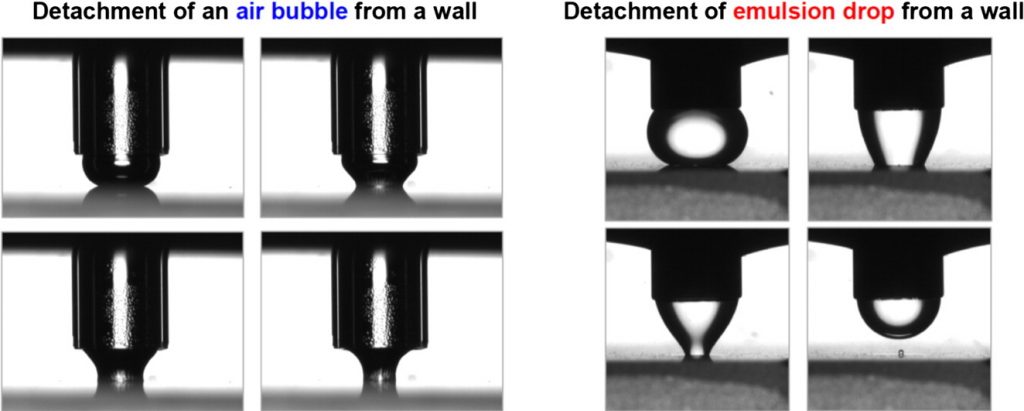Adhesion of bubbles and drops to solid surfaces, and anisotropic surface tensions studied by capillary meniscus dynamometry

Here, we review the principle and applications of two recently developed methods: the capillary meniscus dynamometry (CMD) for measuring the surface tension of bubbles/drops, and the capillary bridge dynamometry (CBD) for quantifying the bubble/drop adhesion to solid surfaces. Both methods are based on a new data analysis protocol, which allows one to decouple the two components of non-isotropic surface tension. For an axisymmetric non-fluid interface (e.g. bubble or drop covered by a protein adsorption layer with shear elasticity), the CMD determines the two different components of the anisotropic surface tension, σs and σφ, which are acting along the “meridians” and “parallels”, and vary throughout the interface. The method uses data for the instantaneous bubble (drop) profile and capillary pressure, but the procedure for data processing is essentially different from that of the conventional drop shape analysis (DSA) method. In the case of bubble or drop pressed against a substrate, which forms a capillary bridge, the CBD method allows one to determine also the capillary-bridge force for both isotropic (fluid) and anisotropic (solidified) adsorption layers. The experiments on bubble (drop) detachment from the substrate show the existence of a maximal pulling force, Fmax, that can be resisted by an adherent fluid particle. Fmax can be used to quantify the strength of adhesion of bubbles and drops to solid surfaces. Its value is determined by a competition of attractive transversal tension and repulsive disjoining pressure forces. The greatest Fmax values have been measured for bubbles adherent to glass substrates in pea-protein solutions. The bubble/wall adhesion is lower in solutions containing the protein HFBII hydrophobin, which could be explained with the effect of sandwiched protein aggregates. The applicability of the CBD method to emulsion systems is illustrated by experiments with soybean-oil drops adherent to hydrophilic and hydrophobic substrates in egg yolk solutions. The results reveal how the interfacial rigidity, as well as the bubble/wall and drop/wall adhesion forces, can be quantified and controlled in relation to optimizing the properties of foams and emulsions.

